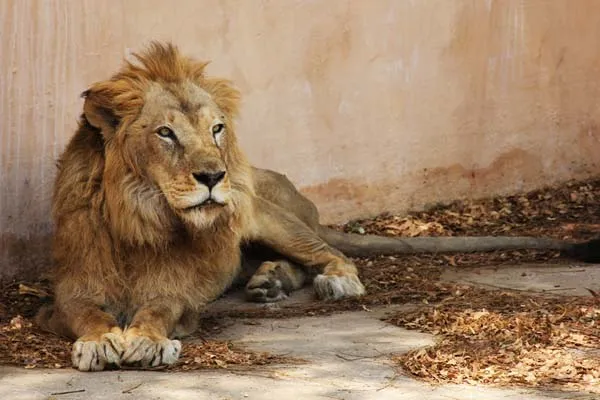The Gujarat Forest Department has registered a case and initiated an investigation into the “suspicious” death of a lioness found dead two days ago in Amreli district.
The lioness was found dead on Thursday in the revenue area of Mota Kankot village in Lilia Range of Amreli district.
A team of forest department officials reached the spot and sent the carcass to the animal rescue center for postmortem.
“Prima facie, the 3-4 year old lioness died under suspicious circumstances, following which her carcass was taken to the animal rescue center and a postmortem was conducted by a panel in the presence of two veterinary officers.”
The case has been registered under various sections of the Wildlife Protection Act, including sections related to hunting.
“Local forest department staff are investigating the area and surrounding regions where the lioness was found dead to determine the cause of death.”
Gujarat is the only habitat of Asiatic lions.
According to a census conducted this May, the number of Asiatic lions stands at 891, significantly higher than the count of 674 five years ago. Not only did the population increase by 217, but these animals were also found outside their traditional habitat, Gir National Park.
Gujarat Forest Department
The Gujarat Forest Department is a government agency responsible for managing and conserving the diverse forest ecosystems and wildlife within the state of Gujarat, India. Its history is rooted in the region’s long-standing princely conservation traditions, which were later formalized under British rule and post-independence forestry policies. Today, it is renowned for its successful conservation programs, most notably the protection of the Asiatic Lion in the Gir Forest.
Amreli district
Amreli district is a region in Gujarat, India, known for its historical significance and agricultural economy. Historically, it was a princely state and is home to ancient sites like the Pipavav port, which dates back to the Harappan civilization. Today, it is also recognized for its Gir National Park, the sole home of the Asiatic lion.
Mota Kankot village
I am unable to provide a summary for “Mota Kankot village” as I do not have specific information about this location in my knowledge base. It may be a smaller, lesser-documented village. For accurate details about its history and cultural significance, I would recommend consulting local resources or regional historical records.
Lilia Range
I am unable to provide a summary for “Lilia Range” as I cannot find any notable geographical locations, cultural sites, or historical references associated with this name. It is possible that the name is misspelled, highly localized, or refers to a very minor feature not widely recorded.
Wildlife Protection Act
The Wildlife Protection Act is not a physical place or cultural site, but a significant piece of environmental legislation. Enacted in India in 1972, it provides a legal framework for the protection of wild animals, birds, and plants to ensure ecological security. The act established schedules of protected species and created the network of Protected Areas, including national parks and wildlife sanctuaries, across the country.
Asiatic lions
The Asiatic lion is a subspecies of lion that historically ranged from the Middle East to India. Today, their only remaining natural habitat is the Gir National Park and Wildlife Sanctuary in the Indian state of Gujarat, where a successful conservation program has helped their population recover from the brink of extinction in the early 20th century.
Gir National Park
Gir National Park is a wildlife sanctuary located in Gujarat, India, and is the only place in the world where Asiatic lions can be found in the wild. It was established in 1965 to protect the species, which had been hunted to the brink of extinction by the early 20th century. Today, the park plays a vital role in the successful conservation of these majestic animals.






